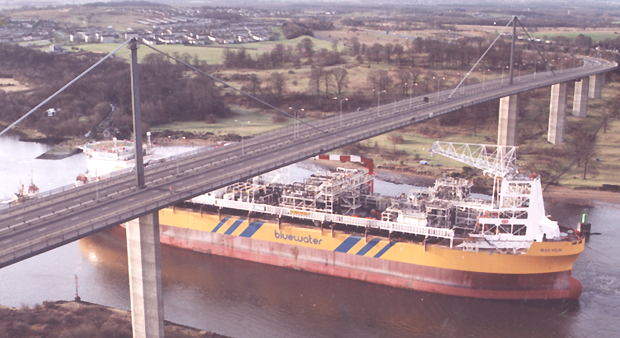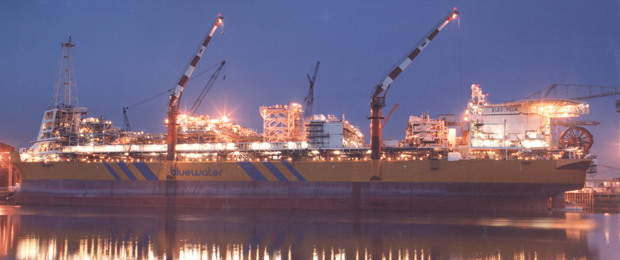The Ross oil field is situated in the outer Moray Firth, on blocks 13/28a and 13/29a, 60km north of the Scottish coast and 30km south-east of the Captain field. It was discovered in 1981 with well 13/29-1.
Ten exploration and appraisal wells have been drilled in and around the field, with five of these testing oil.
Reservoir
The field produces from two upper-Jurassic (Piper Sandstone) reservoir zones.
Drilling
Five wells were pre-drilled prior to first production. Because of the relative complexity of the two reservoirs, the overall drilling programme consists of ten high-angle or horizontal wells (six production and four injection wells) from three sites, in order to optimise reserves recovery.
Drilling contracts were awarded to the Global Marine Drilling Company and Transocean Offshore (North Sea). The Glomar Arctic III rig won the contract for the first two development wells and the Transocean Discoverer for the remaining eight wells.
Reserves
Reserves are estimated to be in the order of 60mmbbls to 100mmbbls of light oil and 20bcf to 30bcf of gas. The gravity of the oil is 37° API.
Peak production is approximately 40,000bbls of oil per day. Total pre-production expenditures will be approximately US$300 million.
Development concept
The Ross oil field has been developed using a floating production, storage and offloading (FPSO) vessel, anchored in between the three wellhead locations (A, B and C), approximately 2.5km apart.
The contract was awarded to Bluewater (Floating Production) Limited, to provide the FPSO services to the project throughout the life of the field.
Hull
The Bleo Holm is a double-hulled construction, with double sides, a double bottom and a bulbous bar. It has 109,614m³ (689,472bbls) of exportable crude storage space (dry crude at 98%), 7,602m³ (41,838bbls) slop tanks and 3,089m³ (19,430bbls) diesel oil storage tanks.
The normal loading rate is 40,000bpd and it has a maximum offloading rate of 5,200m³/hr.
Topsides
The topsides were constructed and installed by Fluor-Daniel and Union Industrial Enterprise (UiE). Equipment for the power generation and processing of crude and other fluids is located in large modules, placed on the main deck supports.
The FPSO’s flare boom and turret mooring system are positioned in the front end of the vessel, while the offloading system is located at the stern.
Gas lift
The gas-lift system consists of treatment plant, compressors, a gas dehydrator unit, knock-out drums, and gas coolers to recycle lift gas between the FPSO and the reservoir.
The Bleo Holm can accommodate a total of 90 people, although the normal operations crew is made up of 38.
Spare accommodation can be used for temporary crew during planned maintenance activities.
Water injection
The water-injection facilities consist of filtration, de-aeration, chemical-injection and HP water-injection pumps. Seawater is used for cooling and well water injection. Most heat exchangers are directly cooled using seawater, although fresh cooling water closed loops are provided for diesel engines.
The seawater is supplied by two electrically driven feed pumps. The cooling water is discharged overboard while the well-injection water is pressurised and injected into the reservoirs. Produced water is cleaned prior to discharge overboard.
The vessel has clean, wing ballast tanks providing protection to the cargo tanks and thus, no treatment of the ballast water is required.
Export
Shuttle tankers will be used to export the oil to market. Associated gas is shipped via a 23km-long pipeline to the Frigg UK pipeline system, then on to the Frigg St Fergus terminal.
The impact of this development on the environment by flaring will therefore be minimised.









